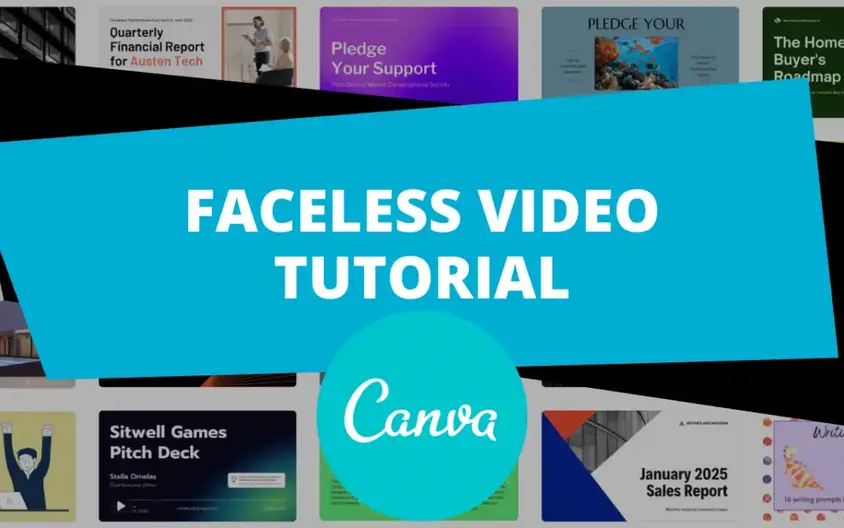Interested in creating faceless YouTube videos? Well, before you embark on this creative endeavor, it’s essential to explore the legal aspects involved. From copyright issues to privacy concerns, there are several factors that you need to keep in mind. In this article, we will delve into the legal considerations surrounding the creation of faceless YouTube videos, ensuring that you are equipped with the knowledge needed to navigate this exciting terrain while staying on the right side of the law. So, let’s dive into the fascinating world of faceless YouTube videos and discover how to tackle any legal hurdles that may come your way!
Exploring the Legal Aspects of Creating Faceless YouTube Videos
YouTube has become a widely popular platform for creators to share their content with the world. With the rise of faceless YouTube videos, where creators choose to hide their identity or use alternative methods to represent themselves, it’s important to understand the legal implications that come with this creative choice. In this article, we will explore the legal aspects of creating faceless YouTube videos and delve into topics such as copyright and intellectual property, privacy and consent, defamation and libel, right of publicity, child protection laws, content regulation, terms of service and community guidelines, fair use and transformative content, YouTube’s demonetization policy, and ethical considerations. Whether you’re an aspiring YouTuber or a seasoned creator, this article aims to provide comprehensive insights into the legal landscape surrounding faceless YouTube videos.
Copyright and Intellectual Property
Copyright and intellectual property are crucial concerns for creators, particularly those who share their content on YouTube. Even though you may choose to create faceless videos, you still need to be cautious about copyright infringement. It is essential to ensure that the content you use, including music, images, and video clips, is either original or used in compliance with fair use or transformative content principles. Giving proper attribution and seeking permission when necessary can help you avoid legal issues related to copyright infringement.
Privacy and Consent
Respecting privacy and obtaining consent from individuals featured in your faceless YouTube videos is of paramount importance. While faceless videos may seem like a way to maintain privacy, it is crucial to remember that you may still be capturing personal information or portraying others without their consent. Always obtain written consent from individuals before featuring them in your videos, especially if their identity is visible, their voice is heard, or their personal experiences are shared. Respect their right to privacy and ensure their consent is voluntary, informed, and revocable.

This image is property of blog.hootsuite.com.
Defamation and Libel
Creating faceless YouTube videos does not absolve creators from potential claims of defamation and libel. It is essential to be mindful of the content and statements you make within your videos, as they can still be subject to legal consequences. Defamation occurs when false statements are made about individuals that harm their reputation. Libel refers to written or recorded defamatory statements. To avoid legal trouble, always ensure that your statements are based on verifiable facts or your honest opinion, making it clear to viewers that you are sharing subjective views rather than making factual claims.
Right of Publicity
The right of publicity grants individuals control over the commercial use of their name, image, or likeness. While creating faceless YouTube videos may seem like a way to avoid infringing on this right, it’s important to be aware that certain jurisdictions and circumstances could still result in legal challenges. If you use recognizable aspects of individuals, such as their clothing styles, distinctive voices, or unique characteristics, to create a persona for your videos, they may have grounds to claim a violation of their right of publicity. Respecting this right involves obtaining appropriate permissions and releases when necessary.

This image is property of www.skylinesocial.com.
Child Protection Laws
When creating faceless YouTube videos involving children, it is vital to be well-informed about the child protection laws in your jurisdiction. These laws are in place to safeguard the welfare and privacy of minors. Even though your identity may be concealed in your videos, you must still adhere to regulations related to child labor, exploitation, and privacy. Familiarize yourself with the specific rules, such as obtaining parental consent, following guidelines on working hours and conditions, and ensuring appropriate content for children.
Content Regulation
YouTube has community guidelines and policies in place to regulate content on its platform. These guidelines cover various aspects, such as hate speech, violence, harassment, nudity, and explicit content. Creating faceless YouTube videos does not exempt creators from adhering to these rules. It’s important to understand and follow the platform’s policies to avoid content takedowns, warnings, or even termination of your YouTube channel. Familiarize yourself with the guidelines, stay up-to-date with changes, and ensure your content aligns with the platform’s standards.
Terms of Service and Community Guidelines
In addition to content regulation, YouTube’s terms of service outline the legal agreement between creators and the platform itself. It is crucial to familiarize yourself with these terms, as they govern your use of the platform and outline your rights and responsibilities, including those related to intellectual property, advertising, and revenues. Moreover, YouTube’s community guidelines provide further insights on what is acceptable, prohibited, or restricted on the platform. Staying informed about these guidelines can help you navigate the legal landscape of creating faceless YouTube videos effectively.
Fair Use and Transformative Content
Fair use and transformative content principles play a significant role in determining the legality of your faceless YouTube videos. Fair use provides exceptions to copyright infringement for specific purposes such as commentary, criticism, parody, and news reporting. If your content falls into these categories and satisfies the four-factor fair use test (purpose, nature, amount, and effect), you may be able to use copyrighted material legally. Additionally, creating transformative content, where you add significant creative value or repurpose existing material in a new and unique way, can also help protect your videos from potential copyright claims.

This image is property of i.ytimg.com.
YouTube’s Demonetization Policy
YouTube’s demonetization policy affects creators across the platform, including those who make faceless videos. Demonetization occurs when YouTube restricts the earning potential of videos by disabling ads or limiting their availability. YouTube employs automated systems and human reviewers to evaluate videos for compliance with its terms of service and community guidelines. It is crucial to understand the potential reasons for demonetization, such as explicit content, controversial topics, or violations of copyright or community guidelines. Creating content that aligns with YouTube’s policies can help maintain your monetization status.
Ethical Considerations
While legality forms the foundation for creating faceless YouTube videos, ethical considerations should also be a focal point for creators. Being transparent and honest with your audience, respecting the privacy and consent of individuals involved, and promoting positive and responsible content are key ethical principles. Strive to create a safe and inclusive environment within your videos, be mindful of the impact your content may have on others, and actively engage with your audience to foster a supportive community. Remember, maintaining high ethical standards can not only benefit your audience and content but also protect you from potential legal complications.
In conclusion, creating faceless YouTube videos can be a creative and compelling way to share content online. However, it is essential to navigate the legal aspects surrounding copyright, privacy, defamation, right of publicity, child protection laws, content regulation, terms of service, fair use, demonetization, and ethical considerations. By staying informed, complying with relevant laws and policies, and maintaining ethical principles, you can confidently create faceless YouTube videos while avoiding potential legal issues. Embrace your unique creative expression and enjoy the process, knowing that you are doing so within the boundaries of the law and with respect for others.





